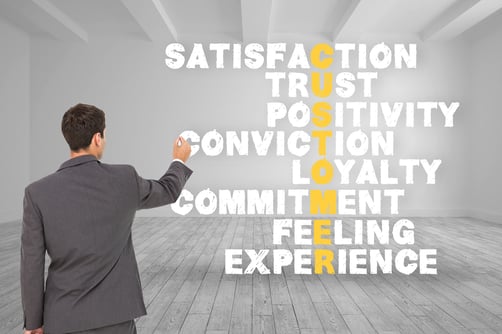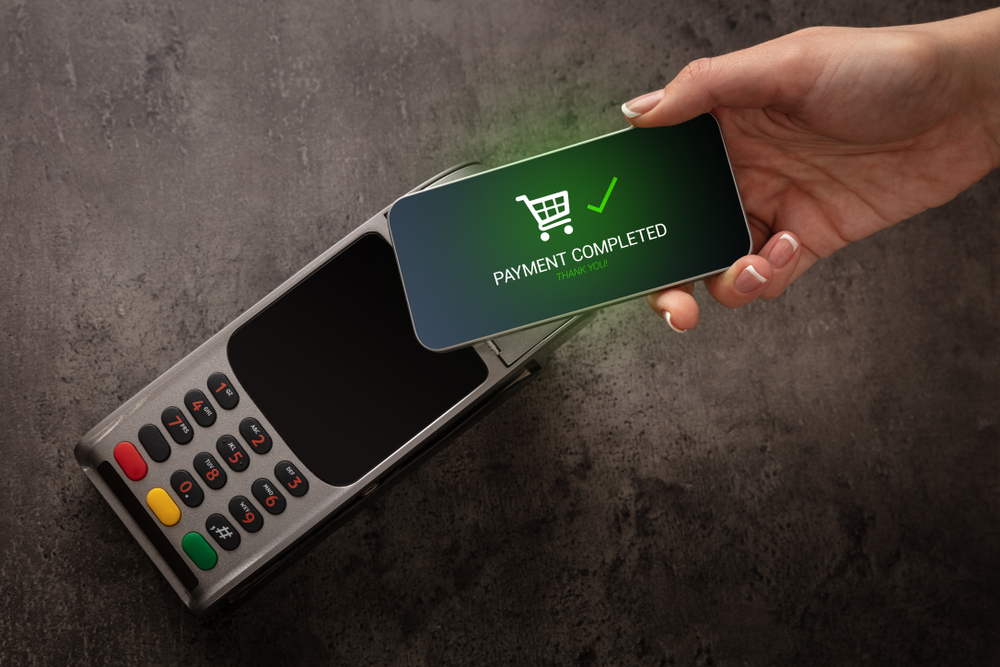 The COVID-19 pandemic will long be known as the catalyst that fueled a massive shift in consumer shopping behavior. To put it plainly, more people are shopping online for more types of items than they ever have.
The COVID-19 pandemic will long be known as the catalyst that fueled a massive shift in consumer shopping behavior. To put it plainly, more people are shopping online for more types of items than they ever have.
Fueled by a more digital lifestyle, experts expected global e-retail sales would grow to $4.8 trillion in 2021. Despite the increase in online shopping, a shocking 88.05% of online orders in March 2020 ended in shopping cart abandonment. What caused their apprehension to complete their purchase? Experts believe it is often caused by elements of the user experience during the buyer’s journey.
With more people shopping online, eCommerce stores must put greater consideration into the customer’s journey to increase conversions. You have the opportunity, maybe even the obligation, to create a user experience that is positive by design.
So for today’s article, we thought we’d take a break from talking about the ins and outs of credit card processing a bit. Instead, we’ll address better ways to enhance the eCommerce customer journey. These enhancements lead to a better user experience, customer satisfaction, and ultimately, increased purchases.
What is the buyer’s journey where eCommerce shopping is concerned? And what does user experience (UX) have to do with it?
The buyer’s journey is described as the process buyers go through to find, evaluate, and decide to purchase a product or service. There are three steps to the process:
- Stage 1: Buyer becomes aware they have a problem.
- Stage 2: Buyer researches and considers options to solve it.
- Stage 3: Buyer chooses a solution and decides to purchase it.
But there is a journey within the journey that begins when the buyer lands on your site. After the buyer researches their options, and before they choose the solution, they land on your site. Once on your site, they begin a whole underlying journey before they pick the exact product, put it in their cart, and buy it. It is this portion of the journey that we will focus on.
User Experience (UX) is the core of the Buyer’s Journey.
This part of the customer journey focuses on user experience. The tech world often refers to this as UX. User experience is exactly what it sounds like. It refers to the experience the consumer is having while interacting with your business. It can be pleasant, informative and fulfilling. Or it can be unsatisfying or even frustrating.
UX is about how the customer feels about their engagement with your website, your products, and purchasing from you. Can imagine how it feels to wait for slow loading pages, run into 404 error codes, or not be able to find what you’re looking for? If so, then you know how important it is to pay attention to these details.
Website owners can positively affect the customer throughout the purchase process. By paying attention to a few details in various areas along the journey, you can influence a person’s decision to buy from you. Some details have to do with how they view the website itself, others have to do with gaining consumer trust. And the most important revolve around reducing friction at the purchase stage.
12 Ways to enhance your customer’s Buyer’s Journey:
So, given that we understand it's the feel or experience of the entire customer journey that leads to a purchase, we must pay attention to details along that journey. The buyer’s journey with you begins on your eCommerce website.
It starts the moment they land on your website.
From the moment the shopper lands on your website, they’re deciding how they feel about you. You only have a split second to make a good first impression. To make a good first impression, you want your homepage to be uncluttered with a clean and simple design. But it must also have a clear purpose that quickly shows the buyer what they’ll find there.
Without even knowing it, consumers pay attention to how fast your website loads. It’s got to be super fast. Slow-loading websites cost you customers and brand loyalty. Studies show that slow-loading web pages increase site abandonment by 75%. In addition, 52% of consumers say their brand loyalty is influenced by a quick loading site.
Your site must be super responsive if you want your customers to spend any length of time on it. One way to increase site speed is to optimize images for faster loading. eCommerce sites are full of product images, so it's very important they aren’t slowing down your load speed. Google’s page speed insights is a great tool for measuring your site performance.
Geo-targeting can increase conversions.
You want your website to display correctly for whoever is visiting. And from wherever they’re visiting from. If it is being accessed internationally, the web page should display the proper language for the visitor. To do this, use geolocation targeting. Geo-location can also help you display the most relevant ad or products for the region. This way your site presents the right offer to the right customer at the right time.
Mobile compatibility is no longer an option for eCommerce websites.
Over 51% of organic searches happen on a mobile device, and that number continues to rise. But if customers can’t navigate your site, they can’t find what they need. And if they can’t find what they need, they’ll move on faster than you can say go.
In fact, while average shopping cart abandonment hovers at just under 70 percent, it soars to 80.79% on mobile devices. This is a problem since more people are shopping on mobile devices these days than on any other device.
For eCommerce companies, it's more important than ever to be fully optimized for mobile users.
Product search queries must be intuitive.
Businesses can create a tailored experience for customers by understanding the way they search for items. Search queries continue to be an area of extreme lack, even for the top-grossing eCommerce sites. Across the board, eCommerce search is much harder to use than it should be and there is clearly room for improvement. Customers should find it easy to navigate your site.
Many websites aren’t as inclusive as they should be with their search query parameters. Your search queries are how consumers find the products they need on your website. It's also the first place they turn to find non-products such as the return policy or shipping information.
It's hard to determine which types of search terms customers will use. One consumer might type in “flower pot”, another might use the term planter. There may be misspellings while they’re searching, or even regional slang differences. All of these need to be considered when putting in product descriptions for search parameters.
If your site doesn't support varied search queries, people will have a hard time finding products. It may show them fewer or irrelevant results than actually exists.
This is another place where extensive mobile use comes into play. 60% of mobile users turn to the search function first instead of the drop-down category menu when looking for products.
Keep in mind that SEO factors such as site speed and user experience are two of the most important elements of a great website. It may mean ditching less important design elements, especially if they slow your site down.
It's clear that by updating your search capabilities to support a handful of query types, you can greatly improve the customer experience. Once customers can find the products they want, they can buy the products they want. And you’ve greatly increased conversion rates.
Reduce indecisiveness with informative product descriptions.
Product listings are also a common area where customers lose conviction. Product listings should be full of information. Of course, they should include the basics such as clear descriptions, price, and availability. But go a step further by including additional information that supports the decision-making process. Including information regarding care instructions, material type, dimensions, and product reviews helps the buyer decide if it's the right product for them. And, of course, this has the potential to increase your conversions.
Reduce shopping cart and checkout friction to reduce shopping cart abandonment.
 As we pointed out above, shopping cart abandonment is a consumer habit that plagues eCommerce. Any uncomfortable situation right at the time of payment can cause the consumer to walk away from the deal. Even though they’re actively shopping, customer’s get annoyed with things like having to pull out their credit card. For this reason, it's important to consider how you accept credit card payments online.
As we pointed out above, shopping cart abandonment is a consumer habit that plagues eCommerce. Any uncomfortable situation right at the time of payment can cause the consumer to walk away from the deal. Even though they’re actively shopping, customer’s get annoyed with things like having to pull out their credit card. For this reason, it's important to consider how you accept credit card payments online.
But the number one reason they leave is extra costs for shipping and tax. After that, the top reasons include a complicated checkout process, having to create an account, unsure of the total cost, and lack of trust in the site. The good news is that most of these issues are easily fixable.
There are a few simple things you can do to reduce frictions that lead people to leave without buying.
Streamline the checkout process.
One way to reduce friction is to streamline the checkout process to include only the necessary steps. And make sure you show a progress bar. Including a progress bar during the checkout leads the customer to the purchase. Progress bars help customers know where they are and how many steps they have left before they’re done.
Reduce “surprise” costs.
Unexpected fees for shipping and taxes account for 63% of cart abandonment. You can reduce the surprise by providing a “review purchase” page. And be sure to show the page before they're required to enter payment information. The “review” allows customers to review the products in their cart and make sure they're the correct ones. It also gives them the opportunity to see a total that includes shipping fees and taxes and consider shipping times.
This way they are sure of all information before having to enter payment information. If they're not happy with any of the elements, they may still leave at this time. However, consumers are more likely to leave the cart if they have to enter payment information before they know the total costs.
Another way to reduce surprise costs is to add a shipping/tax calculator to your product pages. This way consumers can see the full price they will pay for an item upfront. Being transparent and upfront about all costs will also help you gain consumer trust. Gaining the consumer’s trust is another important element of a satisfying buyer’s journey.
Transparent (and easily found) shipping, return, and refund policies.
Make sure you include a link to your “Shipping and Delivery” page so consumers can easily navigate to it for more information. You also want to clearly spell out and display your return and refund policies. Keep in mind that unsavory and difficult return policies are also one of the main reasons consumers abandon their purchase.
All these small steps combine to help reduce the customer’s fear of buying and ultimately increase conversions.
Encourage customer accounts - but default to “guest checkout”.
Forcing people to create an account in order to checkout only undermines your goals. More than ⅓ of all shoppers leave a site if they can’t checkout as a guest (Statista, 2019). Of course, there are many benefits to having customers create an account with you. But customers don't like to be told what to do. It is much better to default to the option to check out as a guest. Customers in a hurry won't have an excuse to get bothered. But if you give them a choice to create an account for convenience, they're more likely to do so.
Build trust in your brand and your payment security measures.
 Building trust is a huge part of the customer experience and a key factor in shopping cart abandonment. In addition to a valid SSL certificate, prominently display common trust symbols throughout the website. Display security symbols such as VeriSign, TRUSTe, and Norton on your checkout page and throughout the website. It is also smart to include the BBB since consumers see that as a sign of good standing.
Building trust is a huge part of the customer experience and a key factor in shopping cart abandonment. In addition to a valid SSL certificate, prominently display common trust symbols throughout the website. Display security symbols such as VeriSign, TRUSTe, and Norton on your checkout page and throughout the website. It is also smart to include the BBB since consumers see that as a sign of good standing.
If consumers see trust symbols from companies they recognize, it builds confidence in your site security. When you take steps to build trust throughout the whole journey, you increase confidence in buying from you when the time comes.
Offer a variety of payment methods.
People like choices and they expect to be able to pay with their preferred payment method. If they get all the way to checkout and can't use their preferred payment method, they’re more likely to leave than choose another. Obviously, you must be able to accept credit cards online. But it's also important to offer your customers a variety of payment methods. These can include payment methods such as PayPal, ACH, and even Buy Now, Pay Later (BNPL).
Your merchant account provider can help you with the payment methods that are most popular with your target market. And don't forget that all of your payment methods must be mobile compatible as well.
Removing these frictions and improving the user experience can lead to a 35.62% increase in conversion rates.
Fortunately, experts know a lot about the buying and shopping habits of consumers. While there are many ways to increase conversions, starting with your own website and how your customer interacts with it is a great place to start.
By implementing strategies that reduce friction within the buyer’s journey, we can improve their user experience. And improving user experience leads to increased conversions. That’s important considering eCommerce merchants are always looking for ways to increase conversions.
At MonerePay, we are fully committed to our client’s success. To that end, we’re dedicated to helping our clients in any way we can. Whether that’s by offering the best solutions for accepting payments, or by giving advice on how to have a more successful business.
We hope you’ve enjoyed these tidbits to improve your website for better customer engagement. If you have questions about accepting payments on your eCommerce site, call us. Our ETA-Certified Payment Professionals are happy to help make sure you have the best payment options for your customers.

(1).jpg)

.png)

